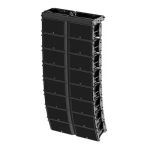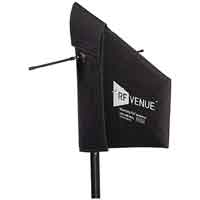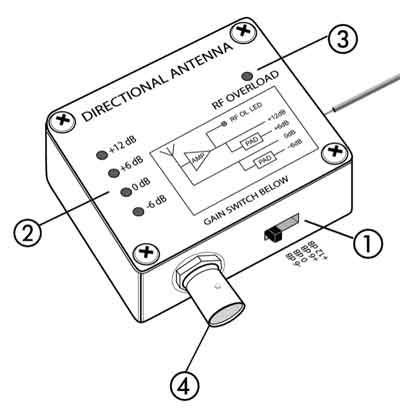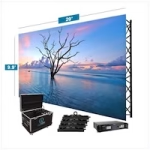F.A.Q.’s Sound System Rentals – RF (Radio Frequency) Devices
L-Acoustics Rentals FAQ’s
Rent L-Acoustics K-Series K2 and Kara II, the Syva Series, and the X Series from The Audio Distillery. These loudspeakers systems are powered by L-Acoustics Processing Amplifiers. We carry the LA4X, LA12X, and the LA-RAK II AVB. To see a complete list of all the L-Acoustics equipment we offer for rent, please click on the image below
Yes. Our team specializes in sound design and deployment using L-Acoustics systems. We’ll evaluate your space, coverage needs, and audience size to create an optimal system design. Learn more about our L-Acoustics design options here.
L-Acoustics Rentals
Absolutely. Every L-Acoustics rental includes professional delivery, setup, system alignment, and removal. We ensure each system performs to factory specifications and is fully optimized for your event environment. Visit our L-Acoustics rentals section for details.
Yes. Our technicians are experienced with LA Network Manager, L-Acoustics Soundvision, and L-Acoustics deployment standards, ensuring optimal setup, tuning, and performance. Learn more about working with our team on the L-Acoustics rentals page.
For large systems like the K2 or Kara II, we recommend reserving several weeks in advance to ensure availability. You can contact us anytime through our L-Acoustics rentals page to confirm inventory and schedule delivery.
Each quote can include cabinets, subs, amplifiers, rigging hardware, cabling, and system control, plus optional setup and engineering services. To request a detailed quote, visit our L-Acoustics rentals page.
Wireless Microphones
There is no 100% guarantee, but close. The two common Radio Frequency “RF” problems with wireless microphones are DROPS and HITS. Drops occur when your wireless microphone transmitter loses its connection to the receiving antenna and the signal drops or cuts out. HITS are signals coming from unknown transmitting devices that are operating on the same frequency as your microphones and disrupting your signal. They result in a loud hiss or static sound. The solutions to those two problems are too numerous to list in a short FAQ. However, for most events, following some simple rules your event will go off without a wireless glitch.
1. Position the antennas so they have an unobstructed line of sight to the microphone transmitters. Objects like Aluminum Truss, Metal Framed Walls, and Concrete Walls all block radio signals. You may test your microphones before your event, then once your guests arrive, problems occur. People block radio signals. Position the antennas so they are above the crowd level, unobstructed to the microphone transmitters.
2. Use high quality microphones. The Shure Digital Wireless microphones that The Audio Distillery offers all have advanced scanning features that, when utilized correctly, will help avoid MOST wireless microphone reception problems. When it is mission critical, especially when there is a high density of rf devices, we use Shure’s Wireless Workbench Software (WWB6). By inputing the geographic location, it excludes public service frequencies that the receivers may not pick up during a scan. The software is frequently updated with a FCC database and is extremely usefull in avoiding problems that didn’t exist during a setup or rehearal.
3. Open a dialogue with any other AV crew that may be using wireless devices and be certain you are not trying to use the same frequencies. If that turns out to be the case, one of you will have to acquire a different available frequency.. 
No. The antenna receives the same signal regardless of that switch’s position. It’s purpose is to BOOST (+6db or +12db) or ATTENUATE (-6db) the radio signals to accomodate various lengths of coax cable runs. The adjustment occurs AFTER the antenna receives the signal. If you turn the gain up, any offending frequencies are amplified as well. For short coax cable runs (25′ and under) leaving this switch set at 0 usually works fine. When cables runs exceed 50′, you may consider boosting the signal to +6db.
There is a meter on the Shure receivers that displays the incoming radio signal power. If it is peaking, check to make certain the switch is not in +6 or +12 position. Also, if the antenna is too close to the wireless microphones, the RF OVERLOAD (3 in illustration) will illuminate and the antennas need to be placed further away. If the RF OVERLOAD light is not lighting and your receiver is still getting RF OVERLOAD, then use the gain switch to reduce/attenuate the signal to -6. 
Multitrack Recording
Yes. With the Allen & Heath SQ-5, Behringer x32 and Soundcraft Si, we can record up to 32 tracks over USB. With the Allen & Heath dLive, we can record up to 128 tracks using either Dante or Waves protocol over network. In case you are wondering, the most tracks we have ever recorded in a live event is 72. Owner James Palmer (Jimmy) has successfully recorded 128 tracks for over an hour on both WAVES and DANTE cards loaded in the dLive C3500 in a test environment.
With the Behringer X32 and Soundcraft Si Expression we can record in 24-bit/48khz. With the Allen & Heath SQ-5 and dLive, we can record in 24-bit/96khz.
Yes, yes, and yes. Bring a hard drive and we’ll transfer once we’re done.
Speaker Requirements
That’s up to you as our customer. Depending on the type of event, more speakers could actually mean less volume at the main stage and more evenly distributed volume to the areas further away. See the FAQ regarding DELAY ZONE SPEAKERS.
For concerts and events that require high SPLs (Sound Pressure Levels), yes, more speakers can make it louder and offer better coverage than a few speakers.
Often times in event rooms or large outdoor areas, our customers want the volume distributed evenly throughout the area. By only placing speakers at the main stage, or FRONT OF HOUSE (FOH) position, areas of the audience further away may not hear a quietly speaking presenter. At the same time people 100′ closer to the stage are getting blasted. In these cases we add speakers closer to the areas requiring the additional coverage. You can do this without programming any delay to that zone’s signal, however, your ear is sensitive enough to hear that the delay speaker sound is reaching your ears before the FOH speaker sound. It sounds like a quick echo. See FAQ on “How do you determine how much to delay the signal in milliseconds to delay zone speakers?
In air at NTP (Normal Temperature and Pressure) sound travels at about 343 meters/second. You can determine the delay in miliseconds with this formula: DELAY=DISTANCE/SPEED OF SOUND x 1000. Or, using a digital mixer, you can simply input the distance in FEET or METERS and the mixer will calculate the delay in milliseconds for you. All the digital mixers that The Audio Distillery offers have built in output delay functions available. Setting this based on a length measurement is an excellent start, but using an audible tool that makes a “tick” or a “ping” sound helps to make sure the speakers are time aligned. Our engineers are well versed in delay speaker functionality and will make certain your sound is clear and balanced.
Loading Equipment In and Out
Our equipment has rolled across the floors of Balboa Bay Resort, Beverly Hilton, Glendale Hilton, The Beverly Hills Hotel to name a few. We are comfortable loading in and out of their respective loading docks and follow hotel policies as established by security personnel. Often times we coordinate with the house engineer to be certain there will be enough power in the room to feed the sound and video production equipment.
The short answer is, yes. The long answer is, we need to take a look at the load in. All of our equipment is in rolling cases and easily rolls to the stage on a solid surface. Our cable trunks can weigh over 300 lbs and are very difficult to push on grass. It is possible to empty the trunks and make many trips, but this will affect the labor cost. Anything is possible, we just need to figure it out.
Live Streaming Services
We use OBS (Open Broadcast Software) to stream to Facebook and Youtube in 720P.
1080P can be done with a reliable upstream from your ISP.
In order to get up to 8 cameras on your live stream, we use a Blackmagic ATEM TV Studio HD. A person assigned as the switcher is able to view all the cameras on a single monitor and choose which camera to make live at any given time.
Yes. Provide the video content in advance so that we have time to test it.
Yes. We need to run the graphics through Photoshop to perform a masking procedure so that they will display properly. Planning ahead helps to assure a smooth production.
Other
We do not inventory staging, however, through our affiliate we can competitively quote your staging requirements. Staging is high quality aluminum, adjustable heights, stairs and rails available and comes in 4’x8′ sections, 4’x4′, and round.
Yes. Provided you are not eating a Carl’s Jr. Famous Star over the mixing console. Our equipment is reliable because we take care of it. Taking chances with food and drinks over the console is a no no.
